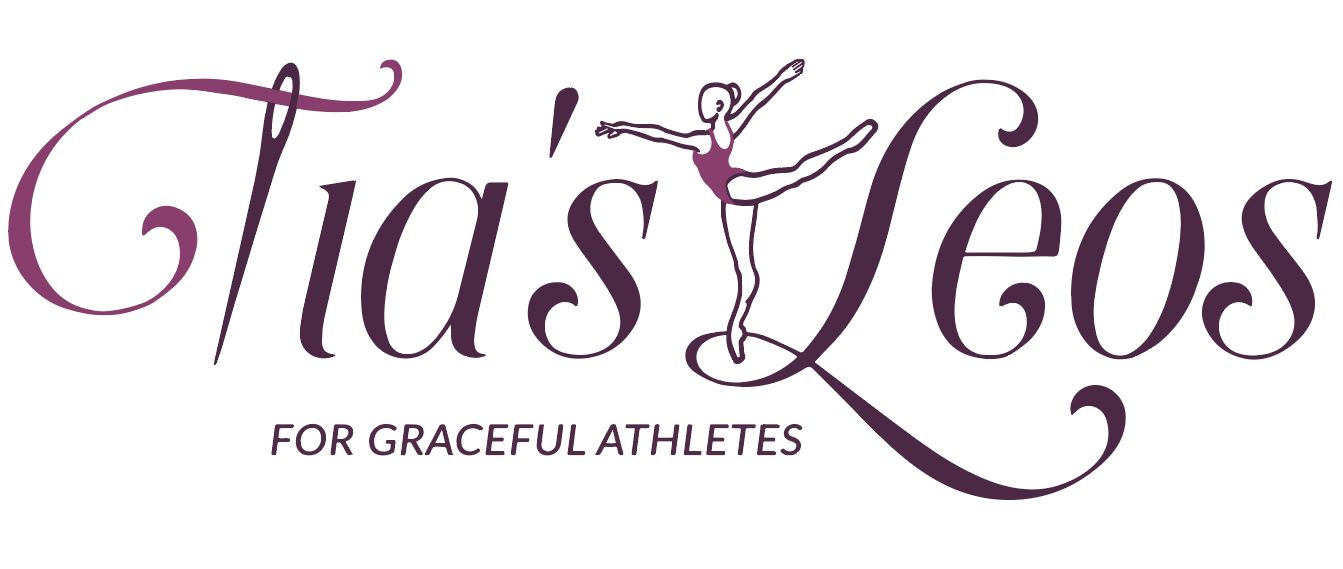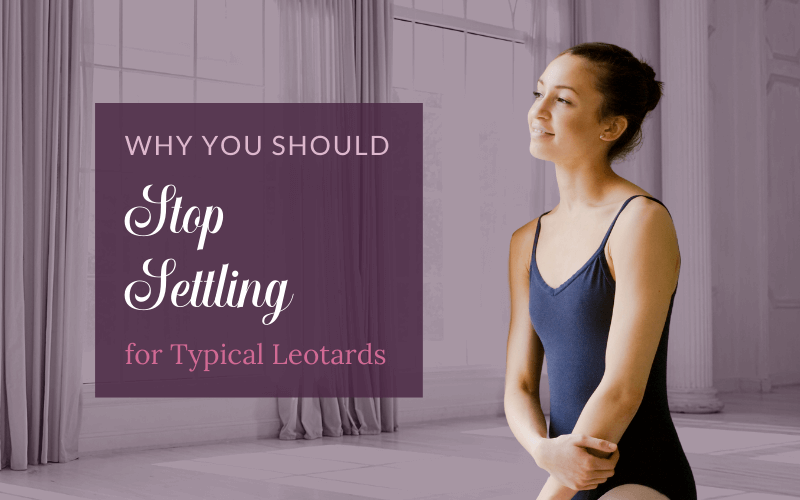A couple of years ago I created a leotard survey for my dancer friends to ask them how they felt about leotards. I asked several questions that started with “how satisfied are you with leotard ?” Leotard styles, leotard colors, leotard coverage, the fit and the comfort. I remember one friend telling me afterward, “I didn’t realize how dissatisfied I am with leotards until I took your survey!”
Sorry. Haha.
At the same time, though, not sorry. Dance is an area where too many people have accepted the idea that beauty is pain. Sometimes I think that idea is true, and experiencing some pain is worth it for the result. However—leotards shouldn’t be a pain. There is no reason for it. And, in case you’ve internalized the “beauty is pain” idea so much that you don’t even notice how leotards are a pain—let me point some things out to you, with love. Because I don’t want you to keep settling for this pain when you don’t have to.
Typical leotards aren’t comfy
Have you ever considered wearing a leotard inside-out? 😆 I’m serious. 😐
I ask because that would probably be a lot comfier than wearing it right-side-out.
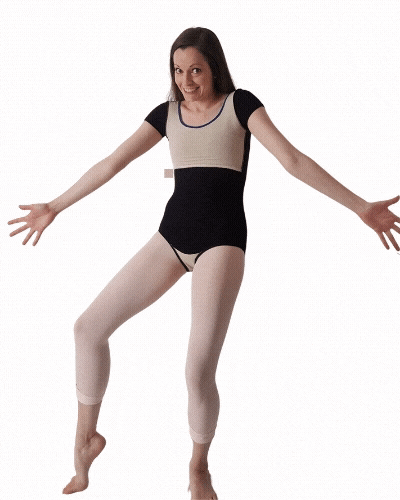
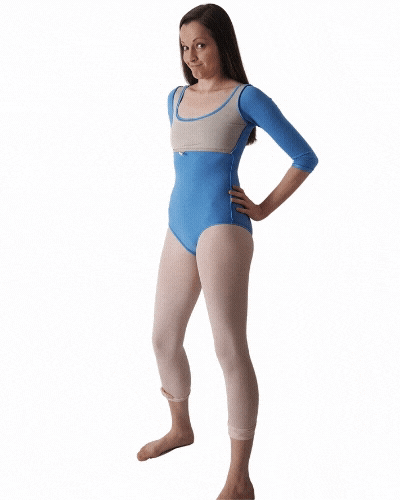
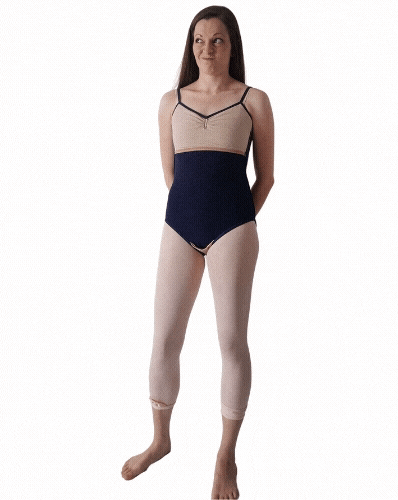
(Having tried these leotards on inside-out, I can verify that not having the elastic and tags and whatnot against my skin was great, and the seams were smoother and comfier. However, if the straps/shoulders dug in when they were right-side-out, they still dug in when inside-out.)
You might have thought, “No, of course I wouldn’t wear a leotard inside-out, that would look ridiculous.” Well, that’s part of the problem.
Typical leotards are constructed to look pretty on the outside, and who cares what’s going on inside. So you end up with smooth, pretty stitches on the outside, and layers of loopy, scratchy stitches on the inside that dig into your skin. But who cares as long as it’s pretty, right?
I care!
Other athletes—runners and whatnot, people who are generally acknowledged as athletes—have been pampered a bit. They’ve got people working on making the comfiest, most supportive shoes and athleticwear to support them in their athleticism and make sure that what they’re wearing isn’t holding them back from reaching their potential. They’re making comfortable clothing to improve their experience and help them take care of their bodies so they can enjoy their sport more.
I think dancers deserve that same pampering. 😊
Typical leotards aren’t built for support and coverage
A pretty classic leotard includes spaghetti straps. I don’t mind spaghetti straps on a camisole, but I hate them on a leotard. Why? Because leotards are already snug, the fabric is stretching over your body for a secure fit. When all that is holding the leotard on your shoulders is a couple of tiny straps, a lot of strain is put on them, which means those tiny straps dig into your skin. Blegh.
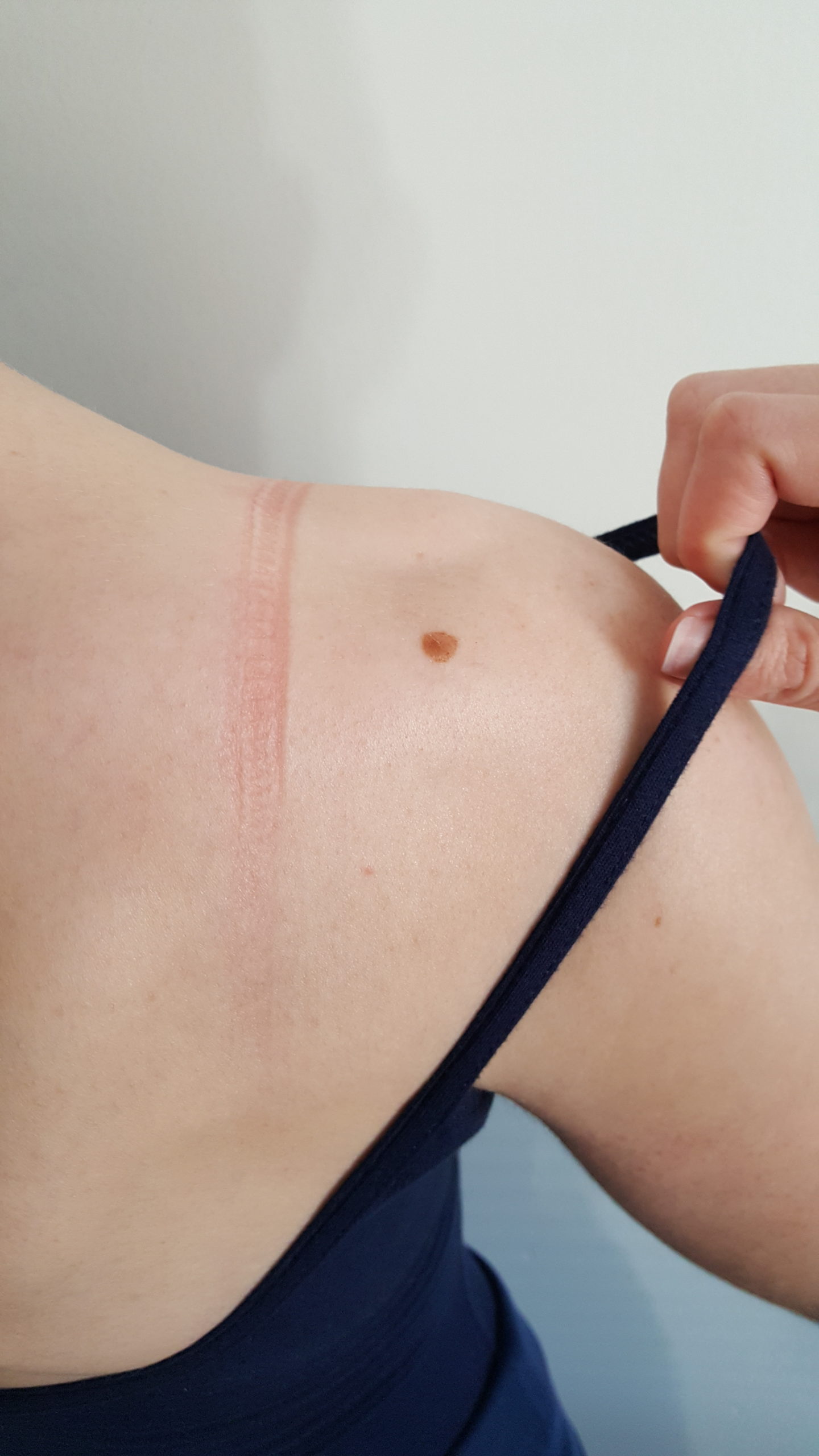
Red lines left on my shoulder after wearing a spaghetti strap leotard for about a half hour
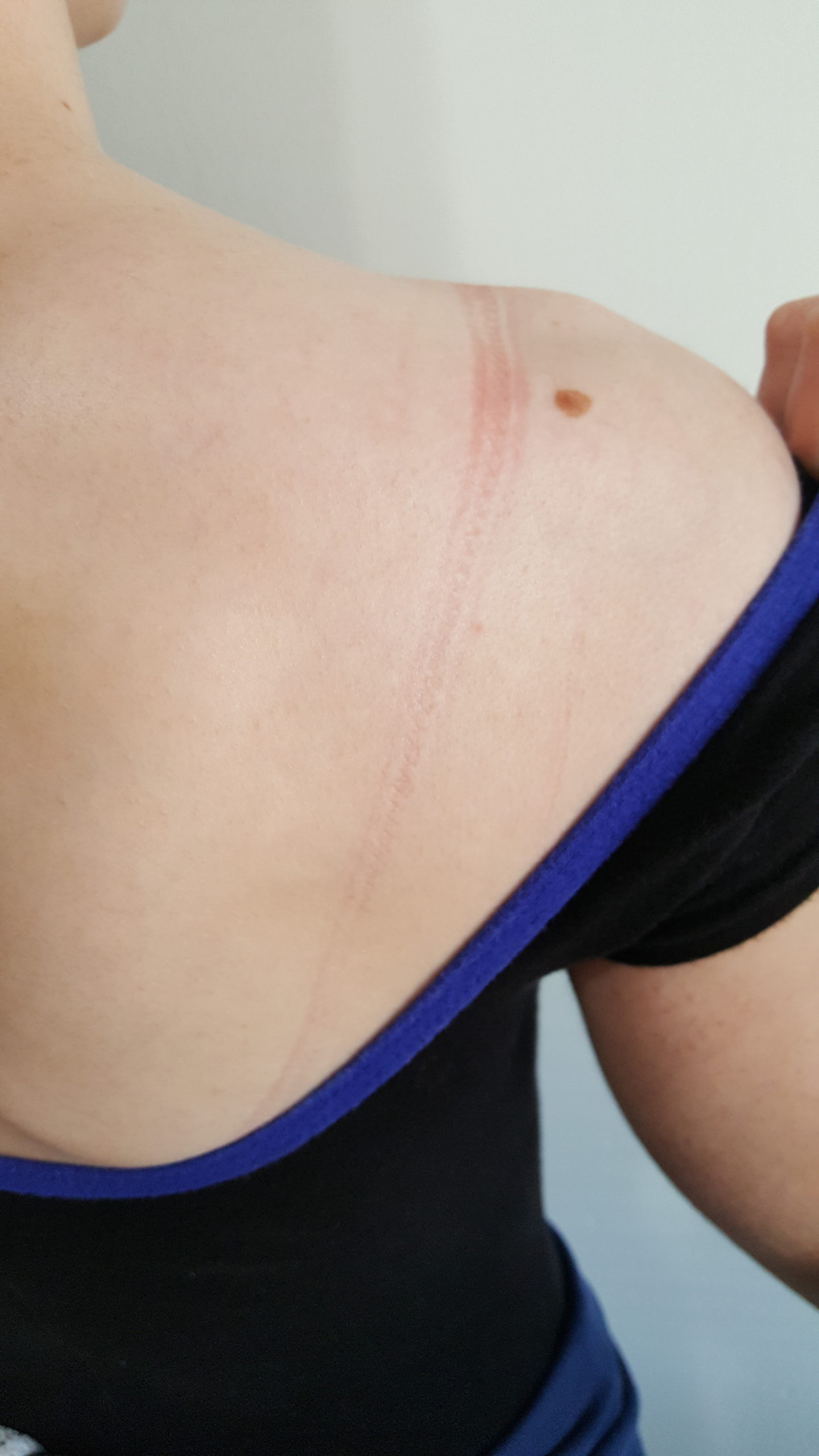
Red lines left on my shoulder after wearing a typical leotard for about a half hour
Sadly, you can see that the same thing can happen with sleeved leotards as well.
Many leotards are constructed with a little shelf lining for bust support. They’re inadequate, though. For people like me with a small bust, they’re just kind of annoying and unnecessary, but for dancers with a larger bust, that shelf lining just doesn’t cut it.
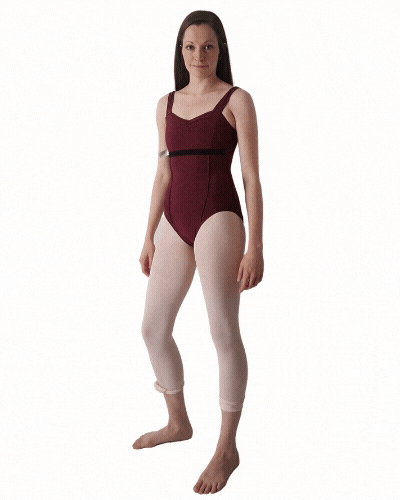
Leotards should be comfortable and secure. When you wear a leotard, you should be able to focus on what you’re doing and move with freedom. You shouldn’t have to worry that your leotard might fall off, or that your body might fall out.
Standard sizing doesn’t cut it
Here’s a big one: standard sizing. With typical leotards, you get to choose between small, medium, and large . . . sometimes extra small, sometimes extra large, etc. Granted, for some people, those sizes are specific enough. But I hear from dancers who don’t have a torso with just one size!
Some dancers might be small on bottom but medium on top. So they have to choose . . . do they want it to fit on bottom but be constricting on top? Or do they want to be able to breathe better, and deal with a saggy bottom? These are not great options!
In addition to fit issues with the width of the leotard, the length can also be a problem. I’ve heard from several dancers with a longer torso who struggle to find a leotard that is long enough to fit comfortably, or even to cover them! People like me can have the opposite problem as well—I have a short torso and I’ve had a leotard that is long enough that I have to pinch up and sew out some of the torso.
Leotards should be snug, but not constricting. They should fit you lengthwise and crosswise.
You don’t get to decide what your leotards look like
The comfort and the function of a leotard are probably the most important. But the design is where a lot of the fun and self-expression come into play. At least for me, the color and design of a leotard can have quite an effect on my mood and change how I feel when I go to the studio.
There are lots of fun styles and colors of leotards out there, but especially if you’re looking for leotards with comfort and coverage, your selection is quite limited. Put all of these factors together, and you can get quite fed up with searching for a leotard in stores that meets your needs. You might just have to make one yourself!
Now that we’ve established that typical leotards kind of suck . . . in my next post I’ll tell you more about why you should consider making your own leotards. 😉
But if you already believe me and you’re ready to make your own leotard now—sign up for my free DIY Athletic Leotard Course!
